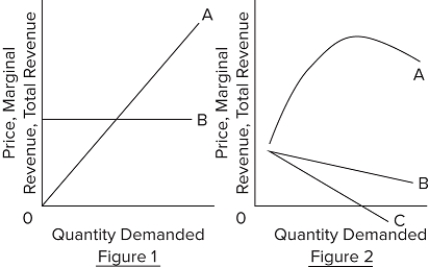 Refer to the demand and cost data for a pure monopolist given in the table. An unregulated, nondiscriminating monopolist would maximize profits at a price and quantity of
Refer to the demand and cost data for a pure monopolist given in the table. An unregulated, nondiscriminating monopolist would maximize profits at a price and quantity of
A) $250 and 2 units.
B) $200 and 3 units.
C) $150 and 4 units.
D) $100 and 5 units.
F) B) and D)
Correct Answer

verified
Correct Answer
verified
 Refer to the two diagrams for individual firms. Figure 1 pertains to __________, while Figure 2 refers to ________.
Refer to the two diagrams for individual firms. Figure 1 pertains to __________, while Figure 2 refers to ________.
A) an imperfectly competitive firm; a purely competitive firm
B) a purely competitive firm; an imperfectly competitive firm
C) an oligopolist; a monopolistically competitive firm
D) a pure monopolist; a monopolistically competitive firm
F) All of the above
Correct Answer

verified
Correct Answer
verified